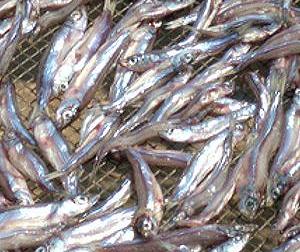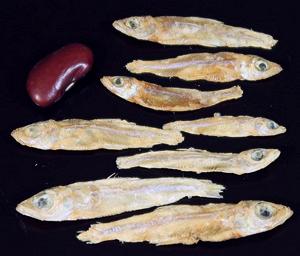 [Kapenta, Matemba (Zambia, Malawi, Zimbabwe); Limnothrissa miodon
(Lake Tanganyika sardine) | Stolothrissa tanganicae
(Lake Tanganyika sprat)]
[Kapenta, Matemba (Zambia, Malawi, Zimbabwe); Limnothrissa miodon
(Lake Tanganyika sardine) | Stolothrissa tanganicae
(Lake Tanganyika sprat)]
These fish both originated in Lake Tanganyika, but have been introduced to other lakes in Southern Africa. They are an important human food in Zambia, Malawi, and Zimbabwe. Forming large schools in open waters, they feed on plankton, but come close to shore during breeding season. They are caught at night using lights and large dip nets. They are then sun dried on screens.
Adult L. miodon average around 4 inches (10 cm) long and adult S. tanganicae average about 2-3/4 inches (7 cm). While still plentiful, there is concern of depletion from overfishing, so some countries have banned fishing for them close to shore during the breeding season and now require licensing. IUCN Red Listed LC (Least Concern). Photo by Emesik (severely cropped) distributed under license Creative Commons Attribution-ShareAlike v3.0 Unported.
More on the Sardines
More on the Herring Family
